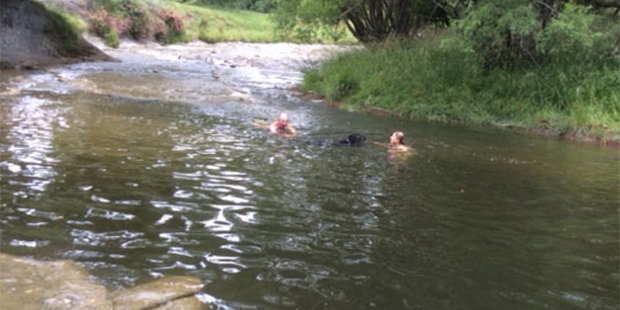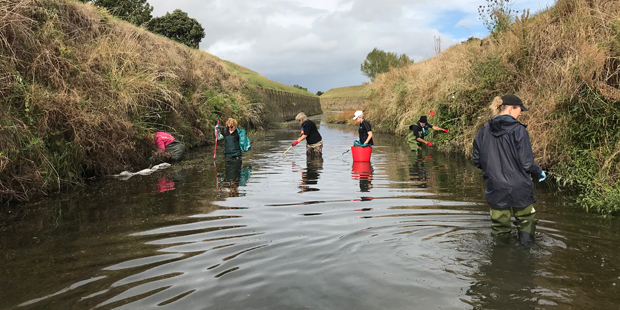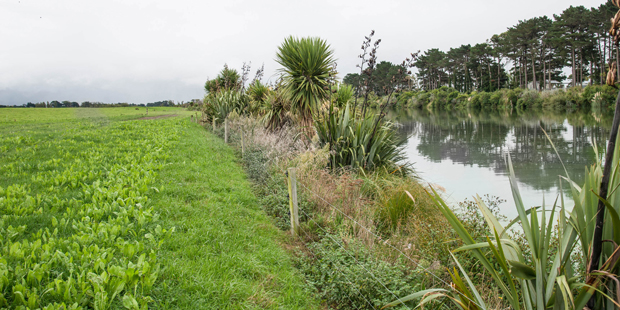Cleaner habitat for river fish
Farmer group is making progress in project to reduce run-off into South Island waterways.


A vast network of rural drains snaking their way across prime New Zealand farmland are the focus of a farmer-led drive to improve river habitats for freshwater fish.
A community group in the Hinds district on the Canterbury Plains has been collaborating since 2014 to reduce the amount of nitrate leaching into the area’s waterways and, at the same time, enhance biodiversity for fish and invertebrates living in them.
One local farmer involved in the group, Craig Fleming, says farmers are working to reduce agricultural nitrogen losses by 36 per cent by 2030 but reductions will only become evident over the longer term.
“We have been told by experts to expect a lag time of up to 20 years before a true trend will show up,” he says. “The variability of weather events and river flow make assessing the effectiveness of reduction initiatives difficult over the short term.”
Fleming, who was born and bred in the district and runs both a dairy farm and a cropping operation, was one of the first farmers to join the Hinds Drains Working Party which was formed to oversee the project.
“We were asked to go on,” he says. “But we were more than happy to as we wanted to do something to improve the water quality and, through that, the habitat within it.”
The group, which also includes other farmers and representatives from Fish and Game, Environment Canterbury, Arowhenua Runanga, Forest and Bird, Department of Conservation and the wider community, is focused on the lower Hinds Plains catchment.
Fleming says the catchment takes in hundreds of farms over a huge area running inland from the sea. However a lot of the water entering underground aquifers from land further up the plains reemerges as springs and seepage near the coast.
The first drains were created in the Hinds district in the 1870s to help soak up seepage water which, in some cases, was completely preventing arable operations. By 1900 more than 150 miles - or 241kms - of drains had been laid.
The drains flow into the Hinds River, a small waterway that bisects the land between the larger Ashburton and Rangitata rivers, or flow directly to the sea. They are managed through rates and overseen by a district liaison committee.
The river once sustained a small stream brown trout fishery but, according to Future Rivers, an organisation which provides funding for projects to preserve outdoor freshwater fisheries, the fish disappeared a few years ago.
Fleming says there are signs the fish are returning. In July this year an inspection of a section of the river located two fish spawning beds while fish stocks within drains and the river have noticeably improved since the dry period between 2014 and 2016; at the same time new nitrogen mitigation initiatives have been put in place to help improve river health.

Photo Supplied / Environment Canterbury
Photo Supplied / Environment Canterbury
As chair of the working party, Fleming says ongoing monitoring (testing for nitrate levels takes place monthly at 13 sites) helps build an understanding of the long-term trends and effectiveness of actions being implemented by the community.
He says it will also provide data to shape future planning for the drains which, he says, total “hundreds of kilometres” in length: “Having a community monitoring programme where there is joint ownership of the data is a key to the success of the project and it will allow us to look forward and focus on solutions.”
Fleming says DairyNZ, Beef and Lamb and FAR (Foundation for Arable Research) are helping cover the costs of the testing. Fish and Game carry out the sampling while Environment Canterbury analyse the data and co-ordinate the project.
He says a large majority of farmers in the district have completed farm environment plans while the working party has produced a set of guidelines for keeping stock away from the water.
The guidelines expressly state that all cattle, deer, pigs, horses and intensively grazing sheep should be prevented from getting access to drains. Sheep can be used to control weeds, but over-grazing that causes erosion and hoof damage must be prevented.
Riparian planting near the drain edges is encouraged to prevent and filter run-off while temporary fencing is also recommended as a way of keeping stock out (permanent fencing can be subject to regular washouts during periods of high rainfall).
The working party says piping in the drains must not “compromise” fish passages while rock weirs have been installed in two drains as a trial to improve the habitat for fish.
Because the drains are uniform in gradient and width, the weirs have been placed at intervals along the drains to see if this helps with habitat diversification. Considered a long-term solution, the fish will be monitored annually to observe results.
Fleming says the working party is also looking beyond fish habitats. In conjunction with the Arowhenua Runanga it has introduced Mahinga kai sites for the management and harvesting of water cress.
Mahinga Kai is about the value of natural resources that sustain life, including the life of people, and it is important to manage and protect these resources in the same way ancestors have done before us.






